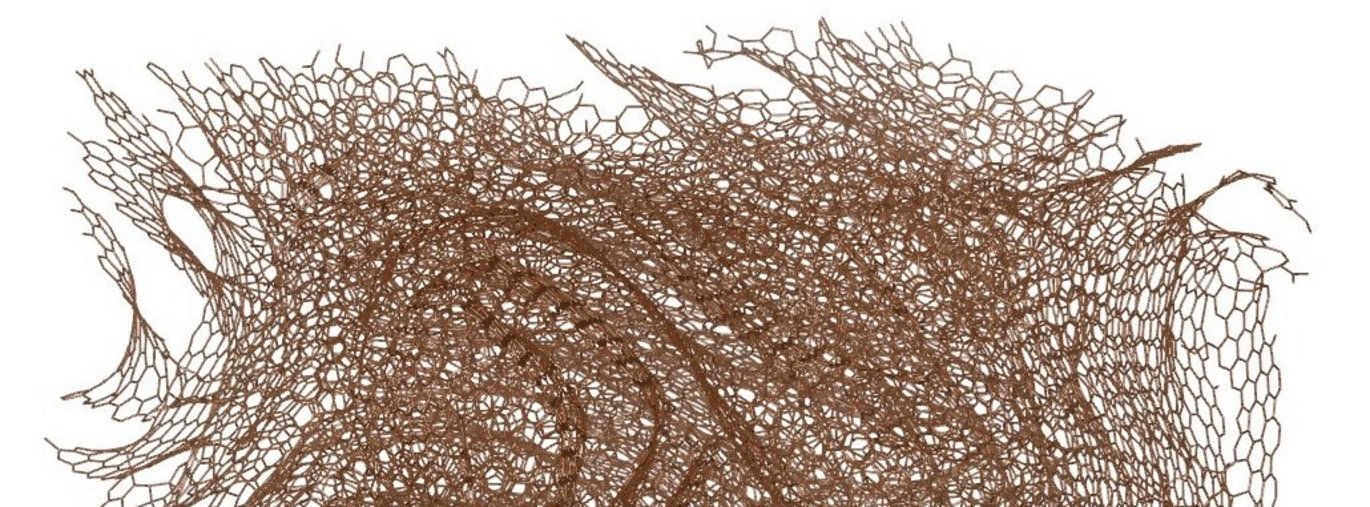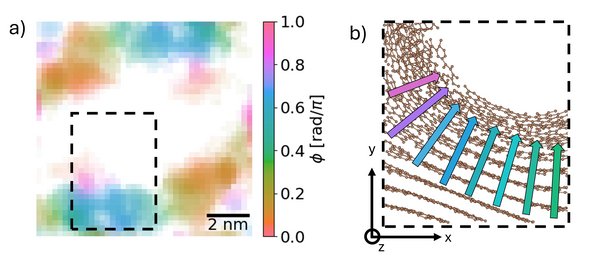Mapping Structure Beyond the Crystal: New Insights into Disordered Carbon
PhD student Rebekka Klemmt has developed new tools to understand the internal structure of disordered carbon materials. These materials, which do not form regular crystals, are widely used in battery electrodes, gas filters, and catalysts. Rebekka’s work focuses on revealing their hidden atomic structures, which are difficult to study with traditional techniques.

In many applications, materials do not need to be perfectly ordered crystals. In fact, disordered materials, materials whose atoms are not arranged in a repeating pattern, often show better performance than their crystalline counterparts. This is especially true for some types of carbon, which are used in next-generation batteries and other energy devices. But the same irregularity that makes these materials useful also makes them difficult to analyze. Traditional X-ray or electron microscopy techniques struggle to reveal what is going on at the atomic level.
Rebekka’s research addresses this challenge by developing new analysis tools that work with a method called scanning electron nanobeam diffraction or short SEND. This technique involves scanning a very fine electron beam across a thin sample and collecting diffraction patterns at each point. These patterns contain information about atomic structure, but interpreting them can be difficult, especially for disordered materials. That is where Rebekka’s new methods come in.
Investigating Curvature, Pores, and Angular Order
To map the internal structure of disordered carbons, Rebekka used a new approach called structurally informed orientation mapping. This method uses prior knowledge of graphite-like atomic features to trace how stacked layers bend or curve throughout a sample. It allows researchers to detect how multiple overlapping layers curve in different directions which is something that traditional electron microscopy struggles to resolve. You can see an example of a structurally infirmed orientation map and the corresponding model that was used in Figure 1.

She also studied the angular arrangements of atoms using SEND data. These angular features are important for understanding how atoms form extended networks or ring structures. But in disordered materials, interpreting this data is not straightforward.
To improve interpretation, Rebekka investigated how the electron beam itself behaves when it passes through disordered materials. Unlike in crystals, the beam does not scatter in regular directions. Instead, it follows a pattern known as branched flow, where the beam intensity gets concentrated in narrow, randomly distributed paths. This affects how deep into the material reliable information can be gathered.
Because the electron beam gets scattered in complex ways, Rebekka studied how sample thickness and experimental noise influence the accuracy of angular analysis. She found that the maximum useful sample thickness depends on how strongly the atoms are locally ordered. If the structure is too disordered or the sample too thick, the patterns become harder to interpret.
How Did They Do It?
To study these materials, Rebekka used SEND combined with new computational tools that she developed to extract meaningful information from the complex diffraction data. Some of her key techniques include:
- Orientation mapping: This method tracks how the curved graphite-like sheets are oriented across the sample. Rebekka used knowledge of known graphite diffraction features to simplify the analysis and extract orientation maps even from noisy data.
- Non-negative matrix factorization (NMF): A statistical method used to break down complex diffraction data into simpler components. This helps identify patterns such as overlapping layers or changes in orientation.
- Electron beam simulations: Rebekka performed simulations showing that electron beams traveling through disordered carbons do not scatter in regular patterns as in crystals. Instead, they follow branched flow, where the beam intensity becomes concentrated in narrow, random paths. This behavior affects the type of information the diffraction patterns can provide.
- Pair-angle distribution functions (PADF): While traditional analysis focuses on the distances between atoms, PADF adds the angles between atomic pairs to the analysis. This allows for the detection of subtle structural motifs and curved geometries that would otherwise be invisible.
Through these approaches, it was possible to reveal differences in the structure of carbon materials used in battery applications.
A New Angle on Atomic Structure: With the pair-angle distribution function
To investigate how atoms are arranged beyond just their distances, Rebekka used a method called the pair-angle distribution function (PADF). PADF measures both the distance and angle between atomic pairs, making it possible to detect patterns such as layer stacking, interlayer tilt, or ring distortions. These features cannot be seen in PDF (pair distribution function) data alone.
By applying PADF to disordered carbons, she revealed intra- and interlayer angular disorder that correlates with material performance. These insights support the development of more accurate structural models and help explain why some carbon materials perform better in specific battery chemistries.
Key Findings
- Electron beams move through disordered carbon in complex, branched paths, not simple straight lines. This must be accounted for when analyzing the resulting diffraction patterns.
- Even without long-range order, disordered carbons show consistent atomic motifs such as curved sheets and ring structures.
- PADF analysis revealed differences in structure between two types of disordered carbon used in battery electrodes. One had more ordered areas and fewer ring defects, which could explain why it performs better in lithium-ion batteries.
- The new mapping tools are especially useful for beam-sensitive samples and can be applied even when the signal is weak or noisy.
Why Does It Matter?
Disordered carbons show outstanding performance in many technologies, but until now, it has been difficult to connect that performance to atomic structure. Rebekka’s methods make it possible to explore these materials in new detail bridging the gap between atomic disorder and useful properties. Her work offers new paths for optimizing materials through improved structural understanding.
Read About It & Stay Tuned for More!
R. Klemmt, A. C. Y. Liu, C. Hu, M. J. Biggs, T. C. Petersen and E. D. Bøjesen
More results from this research are being prepared for publication. Together, the techniques provide a foundation for next-generation structural analysis in materials without long-range order.
If you work with carbon materials, porous structures, or complex amorphous systems, you are welcome to contact Rebekka or the iMAT Center Manager to explore how these methods can support your research.
